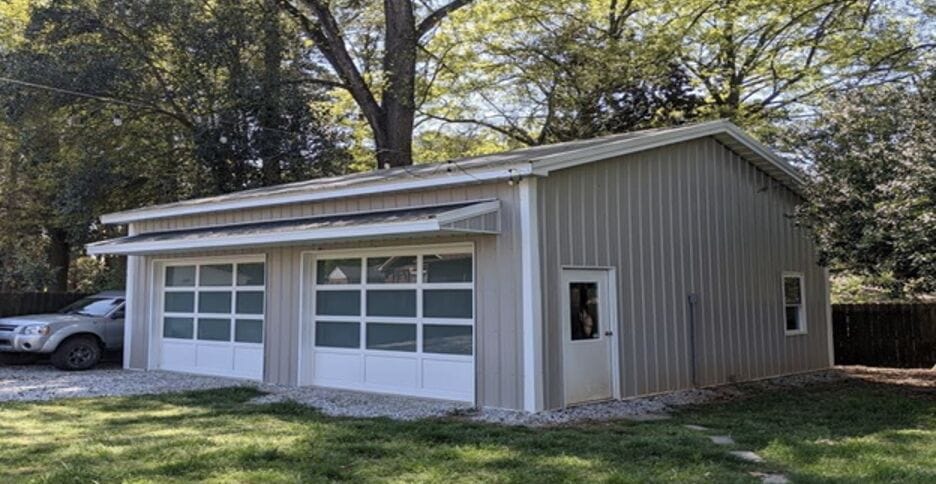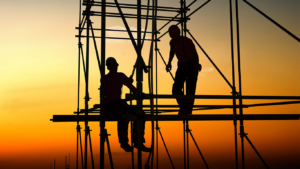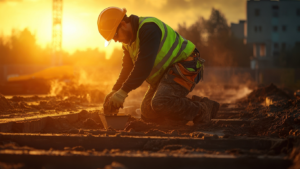As sustainability becomes increasingly important in modern industries, the construction sector is no exception. A growing focus on eco-friendly building methods has led to the rise of pre-fabricated buildings as a key solution for reducing waste and minimizing environmental impact. Through efficient design, off-site assembly, and streamlined construction processes, pre-fabricated buildings are reshaping how structures are built while offering substantial environmental and economic benefits.

The Problem With Traditional Construction
Traditional construction methods are notorious for generating significant waste. Materials such as concrete, steel, and wood are often over-ordered, cut inefficiently, or damaged on-site, resulting in unnecessary waste that ends up in landfills. Moreover, conventional construction tends to be labor-intensive and time-consuming, leading to higher energy consumption and extended project timelines.
This process also involves a higher margin of error. Materials may not fit as planned, requiring adjustments that result in additional resource consumption. The construction industry needs a more efficient solution with labor shortages and an increasing demand for faster project turnarounds. That is where pre-fabricated buildings offer a sustainable and practical alternative.
Pre-Fabricated Buildings: A Sustainable Solution
Pre-fabricated buildings, also known as modular or off-site construction, involve manufacturing building components in a controlled factory environment. These are transported to the construction site for assembly. This process is highly precise and offers several key advantages in terms of sustainability.
One of the primary ways pre-fabricated buildings reduce waste is through better material management. In traditional on-site construction, material waste can account for 10-20 percent of the total materials used. However, pre-fabricated construction reduces waste by up to 90 percent. That is achieved by producing components in a controlled environment where materials are measured and cut with exact specifications, drastically reducing the excess and errors that typically occur on-site.
For example, companies like Worldwide Steel Buildings provide ready for assembly steel building kits, which are precisely manufactured and designed to minimize waste. These kits are shipped directly to the site with pre-engineered parts that fit together seamlessly. As a result, on-site assembly is not only faster but also generates less waste compared to traditional construction methods.
Reducing Energy Use and Carbon Footprint
Energy efficiency is another significant advantage of pre-fabricated buildings. Traditional construction requires extensive use of heavy machinery and tools, consuming large amounts of energy throughout the project. Pre-fabrication, on the other hand, uses factory-optimized processes that reduce overall energy consumption. Factories are designed to minimize energy waste, and since production happens off-site, fewer resources are required during the actual building phase.
In addition, transporting pre-fabricated components to the site often requires fewer deliveries than transporting individual materials. That reduces the carbon footprint associated with transporting heavy equipment and materials back and forth to the construction site. The assembly process is also faster, which further reduces the energy needed to power machinery and tools on-site.
Pre-fabricated buildings provide a tangible way to contribute to global sustainability efforts in a world that is increasingly aware of climate change and the need to reduce carbon emissions. Reducing energy consumption and decreasing waste helps lower the overall environmental impact of construction projects.
Time-Saving Efficiency
One of the most significant benefits of pre-fabricated construction is its ability to save time. Traditional building projects often encounter delays due to weather, labor shortages, or material mismanagement. Pre-fabrication addresses these issues by completing much of the work off-site. Components are manufactured in a controlled environment where weather delays are not a concern, and projects can proceed on schedule without the unpredictability of outdoor construction.
This approach speeds up the construction timeline and ensures better quality control. Since the components are pre-built and inspected before being sent to the site, there are fewer on-site errors, and less rework is required. Faster project completion times also mean that contractors use less energy over the project’s life, reducing the overall environmental footprint.
The Role of Innovation in Sustainable Construction
Adopting pre-fabricated buildings signals a significant shift in how the construction industry approaches sustainability. As businesses seek ways to minimize their carbon footprint, pre-fabrication offers an innovative solution that eliminates unnecessary waste and streamlines the entire construction process.
Pre-fabricated systems also enable more efficient use of space and materials. For example, building components can be designed for future adaptability, meaning structures can be modified or expanded with minimal waste. This proactive approach aligns with the growing demand for flexible, long-lasting, sustainable buildings.
Moreover, the controlled environment in which pre-fabricated components are manufactured reduces the need for harsh chemicals and materials that may otherwise be required on-site. By improving the precision of the building process, fewer hazardous materials are wasted, contributing to a cleaner and more environmentally conscious construction site.
Looking to the Future
As sustainable construction practices continue to gain traction, pre-fabricated construction is set to play an increasingly vital role in the industry’s future. Its ability to drastically reduce material waste, lower energy consumption, and speed up project timelines makes pre-fabrication an ideal solution for developers and builders who want to minimize their environmental footprint.
While traditional construction methods are unlikely to disappear entirely, the benefits of pre-fabrication are too significant to ignore. As more companies embrace this approach, the construction industry will move closer to achieving its sustainability goals, ultimately helping to create a greener future for future generations. Pre-fabricated buildings offer a practical, efficient, and sustainable solution for reducing waste in the construction industry. By embracing these innovative building methods, developers can minimize environmental impact while delivering high-quality, durable structures. As the push for sustainability continues, pre-fabrication is po




